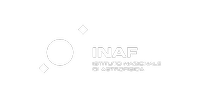WST - The Wide-Field Spectroscopic Telescope
Abstract: We propose a conceptual design study for a 12-metre wide-field spectroscopic survey telescope (WST) with simultaneous operation of a large field-of-view (3 sq. degree), high-multiplex (20,000) multi-object spectrograph (MOS) and a giant 3x3 arcmin integral field spectrograph (IFS). In scientific capability these specifications place WST far ahead of existing and planned facilities. In only 5 years of operation, the MOS would target 250 million galaxies and 25 million stars at low spectral resolution plus 2 million stars at high resolution. Without need for pre-imaged targets, the IFS would deliver 4 billion spectra offering many serendipitous discoveries. Given the current investment in deep imaging surveys and noting the diagnostic power of spectroscopy, WST will fill a crucial gap in astronomical capability and work in synergy with future ground and space-based facilities. We show how it can address outstanding scientific questions in the areas of cosmology; galaxy assembly, evolution, and enrichment, including our own Milky Way; the origin of stars and planets; and time domain and multi-messenger astrophysics. WST’s uniquely rich dataset may yield unforeseen discoveries in many of these areas. The study will deliver telescope and instrument designs, cost estimates, an updated science white paper and survey plan, concept studies for data management, and a facility operation concept. The telescope and instruments will be designed as an integrated system and will mostly use existing technology, with the aim to minimise the carbon footprint and environmental impact. We will propose WST as the next ESO project after completion of the 39-metre ELT. Our consortium includes institutes from Australia, which has a strategic partnership with ESO and aims to apply shortly for full membership. Together with ESO and institutes in 9 European countries, our team has the necessary technical and scientific expertise, and brings 70 years of in-kind effort to the proposed study.
 WST has received funding from the European Union's Horizon Europe research and innovation programme under grant agreement No 101183153.
WST has received funding from the European Union's Horizon Europe research and innovation programme under grant agreement No 101183153.
PI INAF: Sofia Randich
Struttura INAF: OA Arcetri
Bando: HORIZON-INFRA-2024-DEV-01-01
Riferimento contratto n. 101183153
Inizio: 01/02/2025
Durata: 36 mesi
Coordinamento: CNRS (FR)
Partners
|
CEA (FR) |
UNIBO (IT) |
ESO (DE) |
AIP (DE) |
|
NCAC (PL) |
UNIVIE (AT) |
CAUP (PT) |
NOVA (NL) |
|
UKRI (UK) |
UCL (UK) |
EPFL (CH) |
ANU (AU) |
|
MACQ (AU) |
UNSYD (AU) |
SUT (AU) |
UNSW (AU) |
|
UWA (AU) |
|
|
|

